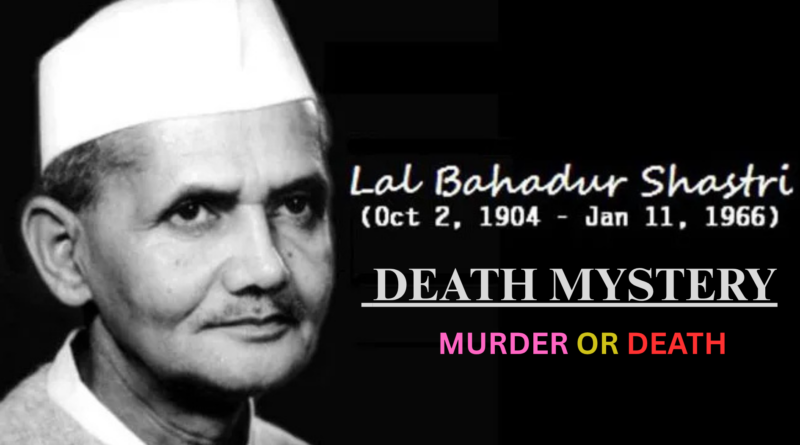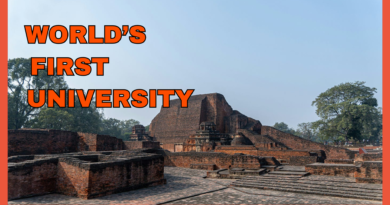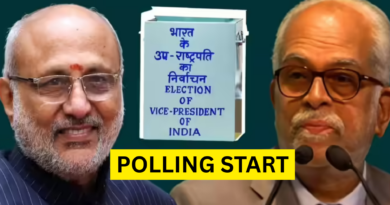LAL BAHADUR SHASTRI’S DEATH MYSTERY
Lal Bahadur Shastri, India’s second Prime Minister and a revered figure in Indian politics, passed away under mysterious circumstances on January 11, 1966, in Tashkent (then in the USSR, now in Uzbekistan), shortly after signing the Tashkent Agreement with Pakistan. While officially recorded as a heart attack, his sudden and unexplained death has fueled a cloud of suspicion, political controversy, and public curiosity for decades.
The Tashkent Agreement and its Context
Shastri had just concluded a crucial peace agreement with Pakistani President Ayub Khan, brokered by Soviet Premier Alexei Kosygin, to end the 1965 Indo-Pak war. The Tashkent Agreement was not widely welcomed back home, as many Indians believed that gains from the war were surrendered too easily. This political pressure, coupled with his untimely death hours after signing the accord, added a layer of intrigue to the unfolding events.
Official Cause of Death – A Heart Attack
The official explanation provided was that Shastri suffered a fatal heart attack around 1:30 a.m. However, Shastri had no known history of serious heart conditions, and he was under the care of Indian and Soviet doctors during his stay. This led many to question whether the explanation of a heart attack was simply a convenient narrative to cover up more sinister truths.
The Missing Postmortem Report
One of the most glaring aspects of this mystery is the absence of a postmortem. No autopsy was conducted, despite the suddenness of his death in a foreign country. His family, especially his wife Lalita Shastri, raised questions about the bruises and blue marks on his body. In normal protocol, the death of a sitting prime minister-especially abroad-would have warranted a thorough postmortem, but that did not happen.
The Milk and Water Controversy
According to reports, Shastri complained of severe chest pain shortly after drinking a glass of milk and water late that night. His personal servant Ram Nath claimed that Shastri was not given proper medical attention for almost an hour after he began feeling unwell. Rumors also emerged that the food or drink may have been poisoned, but these claims were neither investigated deeply nor confirmed.
Allegations of Foul Play
Several conspiracy theories point to potential foul play involving international espionage, internal political rivalry, or opposition to his reformist economic policies. Some believe the CIA might have been involved due to Shastri’s inclination toward socialist policies and his efforts to establish stronger ties with the Soviet Union. Others suggest a domestic power struggle may have triggered the event.
Role of the Indian Government
Successive Indian governments have been accused of suppressing facts related to Shastri’s death. Efforts by journalists and activists under the Right to Information (RTI) Act to access classified files have largely been denied. The government has repeatedly cited reasons such as national security and foreign relations to justify the secrecy-further intensifying suspicions.
Shastri Family’s Consistent Doubts
Shastri’s family members, including his sons, have long demanded an independent investigation into the events surrounding his death. They have consistently maintained that the physical marks on his body and the suspicious behavior of officials raise legitimate concerns that have never been properly addressed or investigated.
Mysterious Silence from Eyewitnesses
Some eyewitnesses, including his personal staff and the Indian ambassador in Moscow at the time, gave inconsistent accounts of the night of his death. Over the years, several people close to the events chose to remain silent or avoided public discussion, deepening the mystery. The driver, doctors, and Soviet hotel staff were never publicly interrogated.
Declassified Documents and Ongoing Secrecy
Even as other nations declassified documents from that era, India continued to keep several files related to Shastri’s death under wraps. In 2009, the Prime Minister’s Office refused to release any documents regarding the incident, citing concerns over international relations. The lack of transparency continues to raise concerns about what secrets may still be buried in government archives.
Legacy of an Unanswered Question
Lal Bahadur Shastri’s legacy as a humble, honest leader remains intact, but the unanswered questions surrounding his death cast a long shadow. His demise deprived India of a visionary leader just as the country was recovering from war and food shortages. The lack of closure and the Indian government’s reluctance to offer clarity has ensured that his death remains one of India’s most enduring political mysteries.




